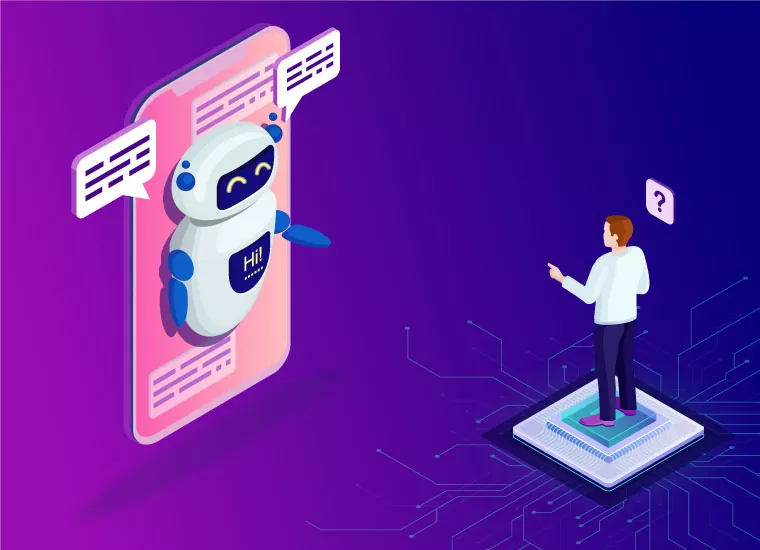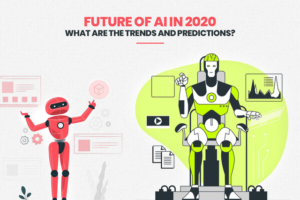If you’ve checked the status of a parcel in transit, inquired about a restaurant’s opening hours or asked a basic question on your bank’s website, there’s a good chance you interacted with a chatbot. Chatbots use artificial intelligence (AI) to assist people. They can generally handle simple questions people ask frequently. They can also help customers get connected to the right departments or human representatives.
Industries ranging from health care to marketing rely on chatbots to improve workflows and outcomes. The education sector is also increasingly dependent on chatbots. Here are eight fascinating examples.
Improving College Student Engagement
College campuses cancelled their in-person events during the coronavirus pandemic. However, chatbots helped fill the gap and kept people informed. For example, Loyola University Maryland utilized a chatbot called Iggy that answered questions people would normally ask during campus visits.
Georgia State University has the Pounce chatbot. It assists students with tech support, such as if they can’t log into the campuses’ online learning platform. Pounce can also send people reminders about payments that are due soon or overdue. Campus representatives said this method was more effective than emails, which students may overlook or just ignore.
“College representatives who used chatbots to engage with students found the method more successful than email.”
Relieving Teachers From Repetitive Tasks
In an ideal world, teachers would do nothing but help students learn. The reality is much different, though. Most teachers find substantial parts of their workdays filled with monotonous administrative tasks. Fortunately, chatbots can help relieve some of those burdens by acting as virtual teaching assistants.
A chatbot called Jill Watson is perhaps the most well-known example of this. Students from the first class to utilize the technology believed all semester that they were interacting with a real person to get their questions answered. Most were understandably surprised when their professor revealed the truth.
Qiaosi Wang is a PhD student in human-centred computing at Virginia Tech. Wang clarified that there is often a disconnect between what people think chatbots can do and the technology’s actual capabilities. Educational institutions that use chatbots to free up teachers’ schedules will likely get the best results when people show how to interact with them.
Facilitating Stakeholder Communications
AI chatbots aren’t perfect, but they excel at responding to people any time of the day or night. That’s why many businesses use them to assist with lead generation. A prospective customer would prefer getting a response of some kind rather than hearing a voicemail message. Chatbots can provide it.
“AI chatbots aren’t perfect, but they excel at responding to people any time of the day or night.”
They’re also useful for ensuring people get the most up-to-date school information. One solution on the market answers questions about everything from meal times to mask policies. It also gathers data to help administrators gauge people’s satisfaction with the chatbot and track other trends.
COVID-19 outbreaks, inclement weather or infrastructure problems can prevent schools from holding classes as usual. People can now get the information they need by asking a chatbot and receiving an immediate response. Most people prefer doing that to spending their precious time waiting on hold for a person to pick up the phone line.
Encouraging College Students to Stay Enrolled
Many college students have a specific period in which they can withdraw from a class. Such activities won’t appear on a transcript or affect someone’s GPA if they do it in the correct time frame. However, it’s a much different matter if someone wants to drop out of high school or college. Luckily, many signs often appear to show that people are at risk of making that decision before they do it. Many schools use chatbots to increase retention rates.
Solutions exist that ask students targeted questions to determine how they’re handling workloads. For example, they might find out how well-prepared they feel for an upcoming test or whether they’re having difficulty balancing educational needs with their personal lives.
Depending on their answers, learners might be directed to resources or people who can provide them with the support they need. In the most severe cases, educators get direct alerts about particular students who seem to be having especially challenging experiences in their classes.
Fostering Collaboration and Communication During Group Projects
Students from past generations largely studied alone. They acquired the right textbooks, read the required chapters and attended classes, all while engaging in few or no efforts that needed teamwork. However, things have changed. For example, the internet has brought a major change where mathematicians more frequently work on problems together instead of alone.
Educational chatbots can help people feel connected and work together on class projects. In one real-life example, students taking a design course said they improved teamwork and learning performance. Conversely, the results indicated the chatbots had no impact on learning perceptions and motivations. That’s a good reminder that they have practical applications in education and elsewhere, but they’re not universal fixes.
Managing Test Prep Anxiety
If you’re like many people, the thought of taking or even studying for a test fills you with anxiety. There are many options for reducing that nervousness, such as setting aside time for studying, using learning apps, and working with tutors or fellow students. However, utilizing a chatbot is another possibility.
One proposed solution used the Facebook Messenger platform. It had a built-in quizzing feature that allowed users to input answers. Tailoring the chatbot’s responses to help people was another aspect.
Approximately 85% of focus group participants said they thought the chatbot could help identify learning weaknesses. Thus, it would make them feel less anxious about upcoming examinations.
Enhancing Learning and Retention in Online Classes
Online learning has been a game-changer by breaking down educational barriers and providing people with increased flexibility. However, one of the downsides is that people taking online classes might experience a lack of support outside of class times. For example, they can’t necessarily visit professors during office hours.
However, research suggests chatbots could support online learners by answering questions that arise outside of class. One study found that 79.4% of students agreed that a chatbot provided helpful information to support their learning process. Similarly, 70.3% of participants found that a quiz offered by the chatbot helped them determine how well they had retained the information.
A chatbot can’t replace human teachers. However, studies like these show they can often complement them.
Helping Students Relieve Loneliness
Going off to college is a huge milestone. However, it also often requires students to make major changes and go through a substantial adjustment period. Not surprisingly, many often deal with intense loneliness, particularly as they miss their family and friends. Chatbots can give people another way to engage, providing a healthy distraction.
Some colleges often used chatbots to assist students who were sent home from campuses due to the COVID-19 pandemic. Even though that perhaps meant they began living with loved ones again, students frequently felt uncertain and fearful, as did many people during the health crisis. Chatbots gave them somewhere to turn when in-person connections were rare out of necessity.
However, getting people to engage with a chatbot means using language and communication methods they know and trust. That’s why many educational chatbots use emojis and even crack jokes to keep students interested.
“Many educational chatbots use emojis and even crack jokes to keep students interested”
Chatbots Help People Learn and Assist Educators
The educational sector was not among the earliest adopters of chatbots. However, these exciting use cases highlight what’s possible. As more decision-makers experiment with these chatbots, they’ll become more widespread in learning applications.










